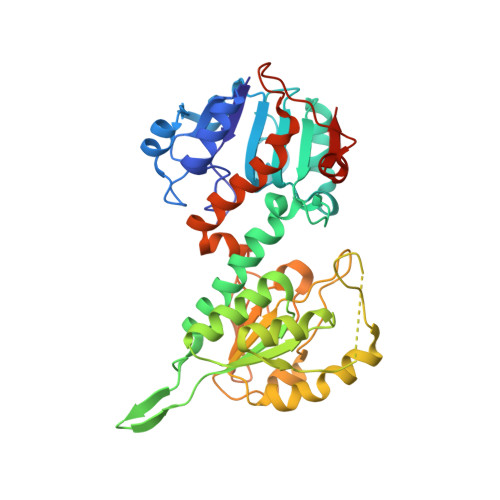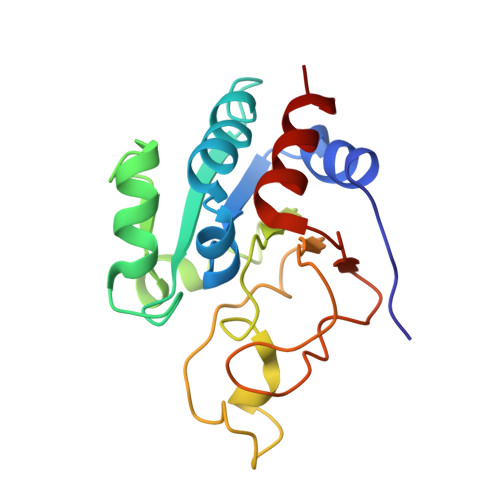Interactions between transhydrogenase and thio-nicotinamide analogues of NAD(H) and NADP(H) underline the importance of nucleotide conformational changes in coupling to proton translocation
Singh, A., Venning, J.D., Quirk, P.G., Van Boxel, G.I., Rodrigues, D.J., White, S.A., Jackson, J.B.(2003) J Biol Chem 278: 33208-33216
- PubMed: 12791694
- DOI: https://doi.org/10.1074/jbc.M303061200
- Primary Citation of Related Structures:
1PT9, 1PTJ - PubMed Abstract:
Transhydrogenase couples the reduction of NADP+ by NADH to inward proton translocation across mitochondrial and bacterial membranes. The coupling reactions occur within the protein by long distance conformational changes. In intact transhydrogenase and in complexes formed from the isolated, nucleotide-binding components, thio-NADP(H) is a good analogue for NADP(H), but thio-NAD(H) is a poor analogue for NAD(H). Crystal structures of the nucleotide-binding components show that the twists of the 3-carbothiamide groups of thio-NADP+ and of thio-NAD+ (relative to the planes of the pyridine rings), which are defined by the dihedral, Xam, are altered relative to the twists of the 3-carboxamide groups of the physiological nucleotides. The finding that thio-NADP+ is a good substrate despite an increased Xam value shows that approach of the NADH prior to hydride transfer is not obstructed by the S atom in the analogue. That thio-NAD(H) is a poor substrate appears to be the result of failure in the conformational change that establishes the ground state for hydride transfer. This might be a consequence of restricted rotation of the 3-carbothiamide group during the conformational change.
Organizational Affiliation:
School of Biosciences, University of Birmingham, Edgbaston, Birmingham B15 2TT, United Kingdom.


















